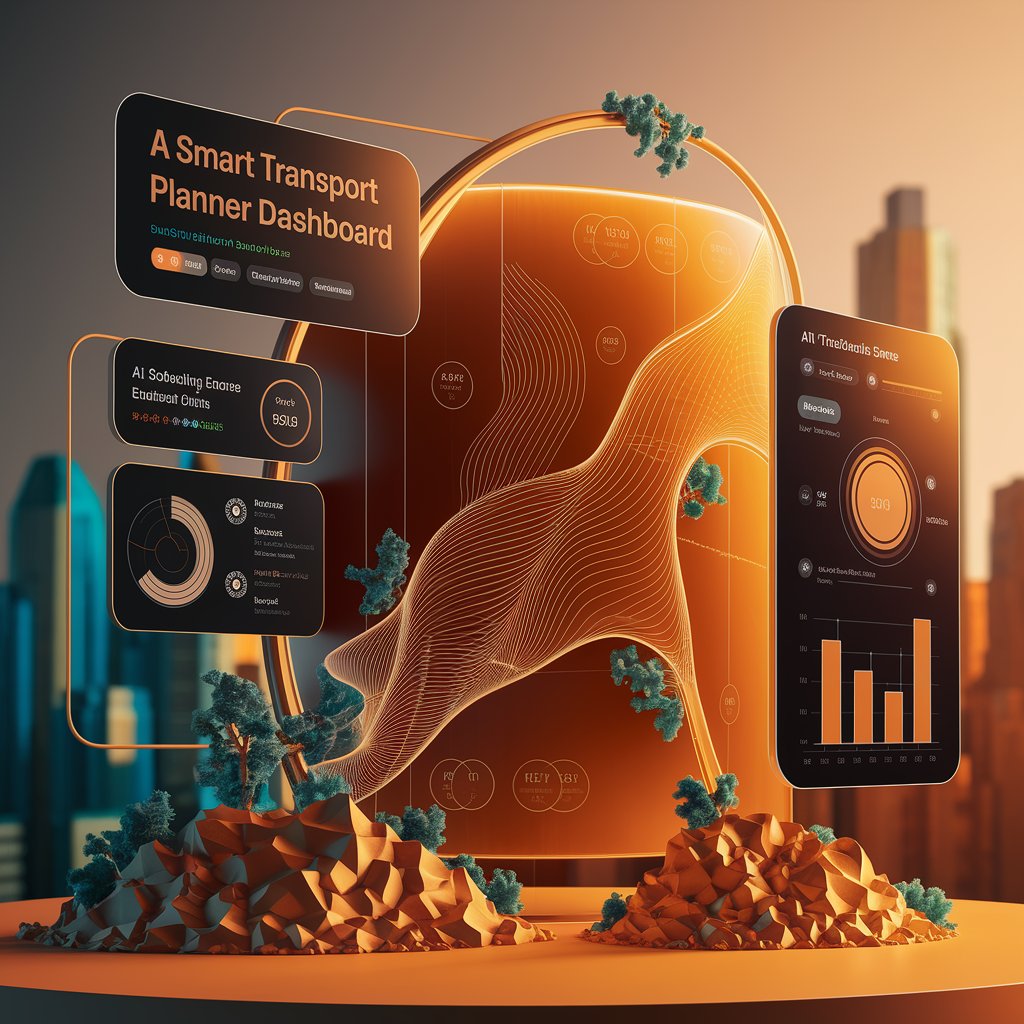Smart Transport Planner: How Linbis Automates and Optimizes Global Logistics

Introduction
Enter Linbis Smart Transport Planner, a next-generation AI-driven system that automates planning, routing, and execution.
It doesn’t just tell you where to move shipments — it shows you the smartest, fastest, and most cost-efficient way to do it.
Step 1: Centralized Transport Ecosystem
Linbis begins by creating a unified platform that connects every part of your transport network:
- ERP and CRM systems for customer and order data.
- TMS integrations for freight scheduling and dispatching.
- Carrier APIs for rates, availability, and real-time tracking.
- GPS and telematics for vehicle and route monitoring.
- IoT sensors for shipment conditions and delivery milestones.
This seamless integration enables Linbis to see your entire logistics landscape — every truck, container, and shipment in motion — in one intelligent view.
Step 2: AI-Powered Route Optimization
The Linbis smart transport planner uses artificial intelligence to analyze hundreds of route possibilities instantly:
- Identifies the fastest and cheapest transport combinations.
- Balances delivery deadlines with fuel and toll costs.
- Calculates optimal load distribution to avoid empty miles.
- Predicts traffic congestion and weather disruptions.
This level of automation means planners can focus on strategy, while Linbis handles the logistics math in milliseconds.
Step 3: Automated Scheduling and Dispatch
Once the ideal route is selected, Linbis automatically builds a schedule and dispatch plan:
- Assigns shipments to the most efficient carriers or vehicles.
- Sends digital dispatch instructions directly to drivers or partners.
- Syncs updates across WMS, TMS, and customer systems.
- Adjusts schedules dynamically if conditions change.
Dispatching becomes instant, coordinated, and completely digital — no spreadsheets, no phone calls.

Step 4: Predictive Transport Management
Linbis doesn’t stop at planning — it predicts outcomes.
The system continuously monitors every shipment and provides real-time insights:
- Predicts delays before they happen using live data and machine learning.
- Suggests alternative routes or carrier swaps automatically.
- Calculates new ETAs and updates customers instantly.
- Reallocates resources when disruption patterns are detected.
This predictive layer transforms logistics from reactive management into proactive intelligence.
Step 5: Real-Time Collaboration and Visibility
The Linbis platform enhances communication and collaboration across the supply chain:
- Centralized dashboards shared between shippers, carriers, and clients.
- Built-in messaging to align dispatchers and drivers instantly.
- Real-time visibility into shipment status, location, and ETA.
- Digital proof of delivery integrated automatically upon completion.
Everyone involved — from warehouse teams to end customers — sees the same live transport data in real time.
Step 6: Performance Analytics and Continuous Improvement
Every delivery provides new insights that fuel Linbis AI:
- Tracks on-time delivery rates, carrier efficiency, and utilization.
- Monitors fuel consumption, idle time, and driver behavior.
- Compares planned vs. actual performance for route validation.
- Generates automated reports and visual dashboards for management.
These insights empower logistics leaders to continuously refine strategies and improve fleet performance.
Step 7: Automation Meets Sustainability
The Linbis smart transport planner also integrates environmental intelligence:
- Calculates carbon emissions per route and shipment.
- Suggests eco-friendly alternatives (rail, consolidation, or fewer empty miles).
- Tracks sustainability KPIs alongside operational metrics.
- Encourages smarter resource allocation for a greener, leaner supply chain.
Efficiency and sustainability go hand in hand — and Linbis optimizes both.

Advanced Features
- AI route and cost optimization engine.
- Dynamic scheduling and carrier allocation.
- Predictive transport management and delay prevention.
- Real-time tracking and collaboration tools.
- Sustainability and fuel efficiency analytics.
Real-World Example 🚚
A logistics company in Latin America implemented Linbis smart transport planner to handle over 500 daily routes across 6 countries.
After 3 months:
- Fuel costs decreased by 22%.
- On-time deliveries improved from 83% to 97%.
- Dispatcher workload reduced by 60%.
- Customer satisfaction increased by 35%.
Their transport network now runs on automation — not spreadsheets.

Benefits 📈
- Efficiency: Optimize every shipment with data-driven precision.
- Speed: Automate route planning, scheduling, and dispatching.
- Visibility: Track operations in real time across the globe.
- Sustainability: Reduce emissions and fuel waste intelligently.
- Profitability: Cut costs while improving service reliability.
Conclusion
With smart transport planner, Linbis redefines how logistics teams coordinate, plan, and optimize freight.
By combining AI, predictive analytics, and real-time automation, it gives companies the ability to plan smarter, execute faster, and operate more profitably.
Transportation planning is no longer manual — it’s intelligent, adaptive, and fully automated.
